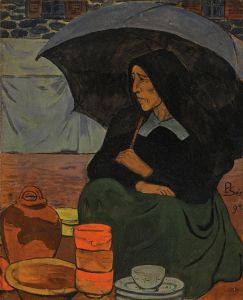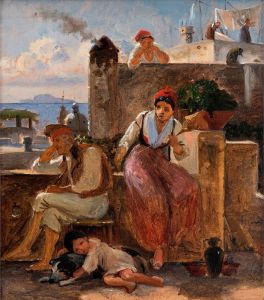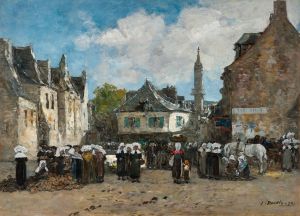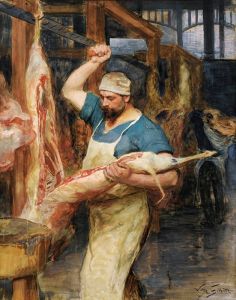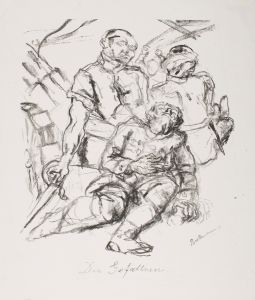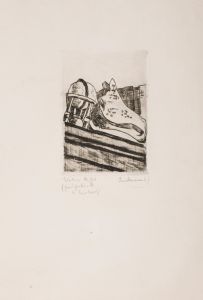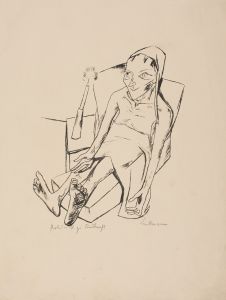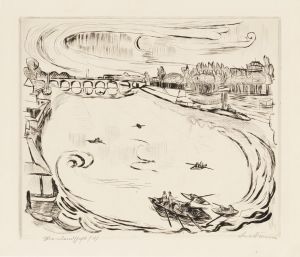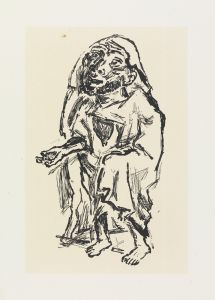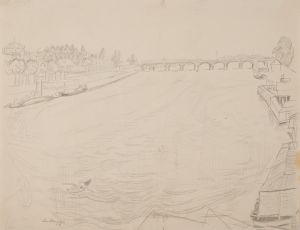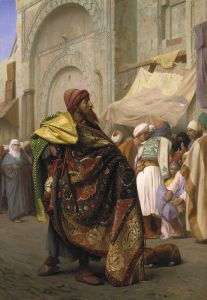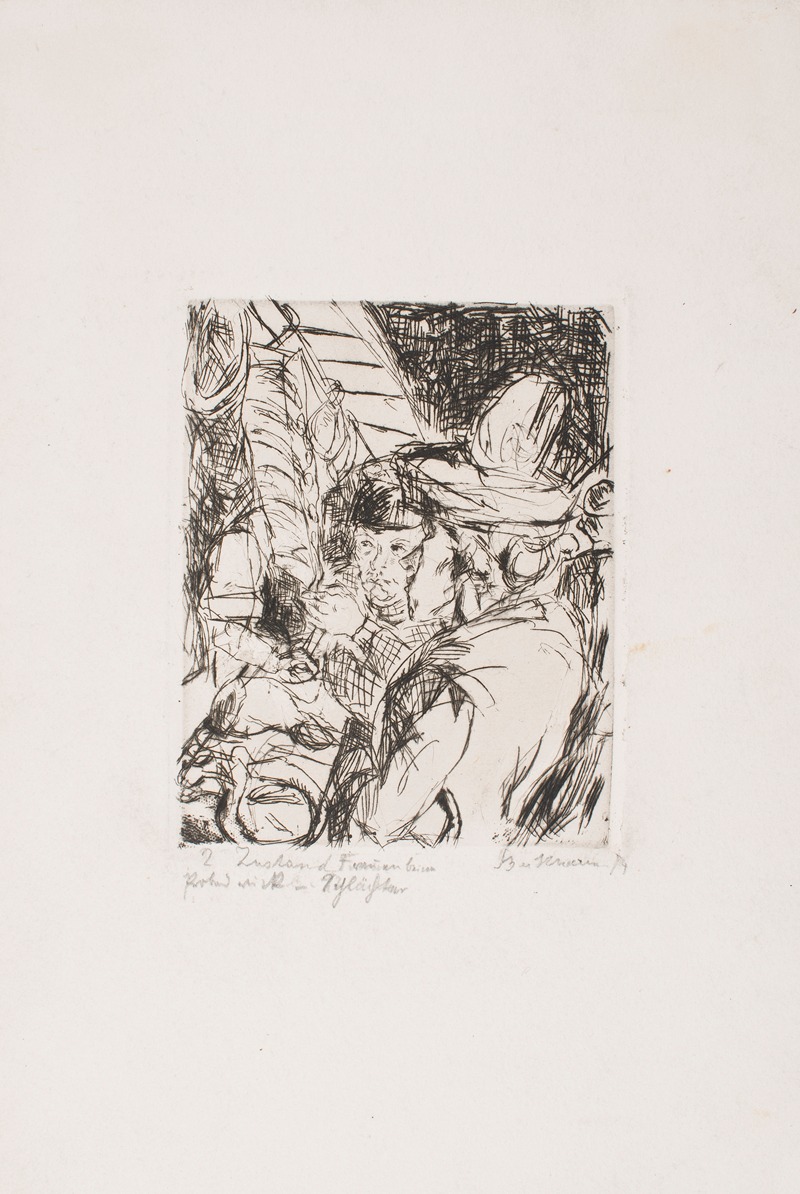
Women at the Butcher
A hand-painted replica of Max Beckmann’s masterpiece Women at the Butcher, meticulously crafted by professional artists to capture the true essence of the original. Each piece is created with museum-quality canvas and rare mineral pigments, carefully painted by experienced artists with delicate brushstrokes and rich, layered colors to perfectly recreate the texture of the original artwork. Unlike machine-printed reproductions, this hand-painted version brings the painting to life, infused with the artist’s emotions and skill in every stroke. Whether for personal collection or home decoration, it instantly elevates the artistic atmosphere of any space.
Max Beckmann's "Women at the Butcher" is a notable work by the German painter, who is recognized for his contributions to the Expressionist movement. Beckmann, born in 1884 in Leipzig, Germany, is renowned for his unique style that often combines elements of Expressionism, New Objectivity, and a personal interpretation of modernism. His works frequently reflect the tumultuous socio-political landscape of early 20th-century Europe, marked by both World Wars and significant cultural shifts.
"Women at the Butcher" was painted in 1940, during a period when Beckmann was living in exile in Amsterdam, having fled Nazi Germany in 1937. This painting is part of a series of works Beckmann created during his time in the Netherlands, a period characterized by a sense of displacement and introspection. The painting captures a scene that is both mundane and charged with tension, a common theme in Beckmann's work, which often explores the complexities of human experience and emotion.
The composition of "Women at the Butcher" is typical of Beckmann's style, featuring bold lines and a dramatic use of color. The scene depicts women in a butcher shop, an everyday setting that Beckmann transforms into a tableau of human interaction and psychological depth. The figures are rendered with Beckmann's characteristic distortion, emphasizing their emotional states and the underlying tension of the scene. This distortion is a hallmark of Beckmann's work, reflecting his interest in the psychological and existential aspects of human life.
Beckmann's use of space and perspective in "Women at the Butcher" is also noteworthy. The painting's composition creates a sense of confinement and claustrophobia, perhaps reflecting the broader context of war and Beckmann's own feelings of exile and uncertainty. The figures are closely packed within the frame, their interactions suggesting narratives of survival, negotiation, and the mundane struggles of daily life during a time of crisis.
Thematically, "Women at the Butcher" can be seen as a reflection on the human condition, a recurring theme in Beckmann's oeuvre. The painting captures a moment of everyday life, yet imbued with a sense of drama and significance. This approach is typical of Beckmann, who often sought to reveal the extraordinary within the ordinary, using his art to comment on the broader human experience.
Max Beckmann's work, including "Women at the Butcher," continues to be celebrated for its emotional intensity and its ability to capture the complexities of the human psyche. His paintings are housed in major museums and collections worldwide, and they remain subjects of study for their innovative approach to form, color, and narrative. Beckmann's influence extends beyond his lifetime, as his work continues to resonate with contemporary audiences and artists alike, offering insights into the human condition through the lens of his unique artistic vision.





